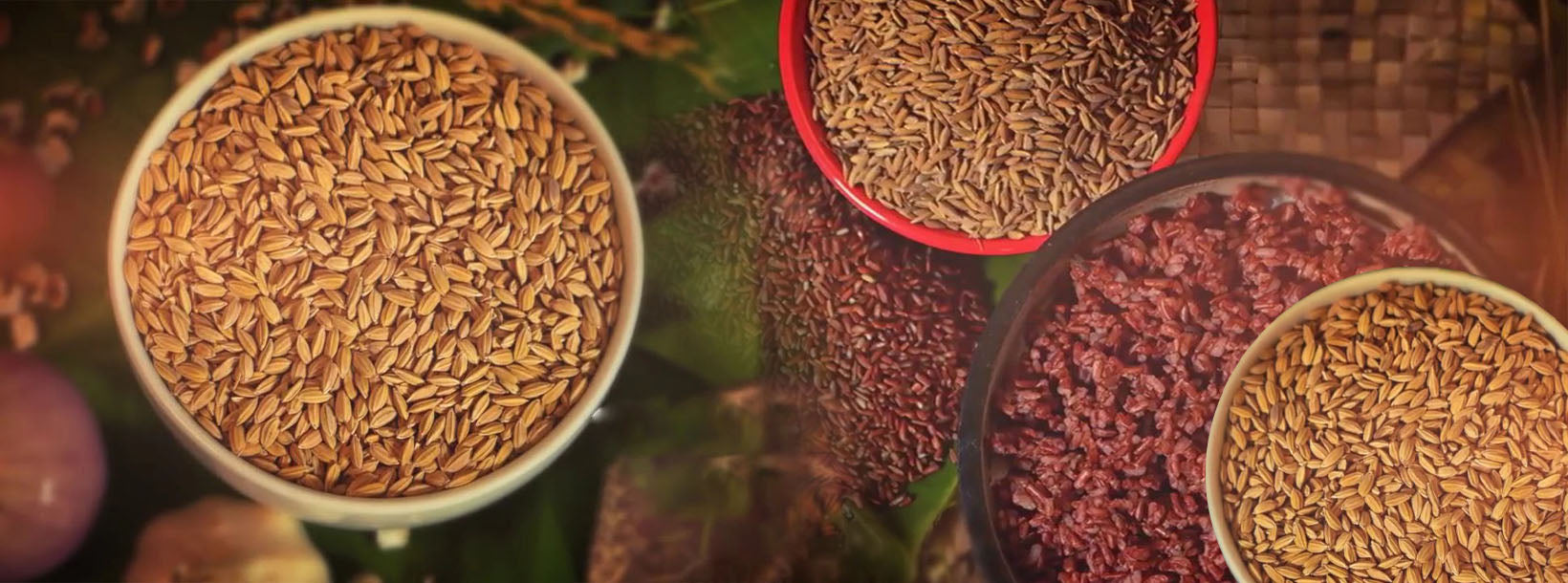
전통 쌀
벼농사는 스리랑카의 역사 및 문화와 오랜 연관을 맺어 왔으며, 스리랑카인들은 지난 3천 년 동안 농업에 기반한 생활 방식을 실천해 왔습니다. 기록된 역사와 고고학을 통해 수집된 증거에 따르면, 이 섬의 벼농사는 기원전 900년에서 600년 사이로 거슬러 올라갑니다.
Traditional Rice
In Sri Lanka rice has been grown as far back as 800 B. C. and it is further supported by massive irrigation structures since 390 B. C. During this period Sri Lanka was known as the granary of the East and existence of about 2000 indigenous rice varieties has been reported. Beginning of the 20th century about 567 traditional rice varieties had been documented. Those varieties had been adapted to various rice growing ecology’s in high elevation and low land rice farming systems of the country through natural evolution and unintentional selection by our ancestors.
As the traditional varieties were in mixtures due to negligence of the foreign rulers, purification process was adopted by the scientists of the Department of Agriculture in 1920s’ and pure lines were recommended for cultivation and present traditional varieties are mainly the outcome of those pure lines. Those varieties had the sufficient diversity to fit into the diverse rice growing environments and the consumer preferences. Therefore, traditional rice varieties are possessing specific adaptability rather than general adaptability.
Most of the varieties have long maturity duration of 4-6 months from seeding to harvesting. Very few varieties were with 2½ to 3½ months maturity duration. The most traditional rice varieties are red and only few are white in pericarp color. Some traditional varieties are highly photo period sensitive and they flower only when they are exposed to short days in the month of December so that they can be grown only during maha season in the country. The traditional plant architecture is very primitive having tall and weak culms which tend to lodge during cultivation. The harvest index of traditional varieties is less than 0.3 indicating that the biomass content is greater than the amount of grains produced in a plant leading to poor yield. The specific adaptability, resistance to antibiotic stresses and single resistance or susceptibility nature for some major pests and diseases are reported in traditional varieties.
The nutritional and medicinal properties of these varieties are claimed in the Sri Lankan traditional knowledge. Such properties are diverse and those include ability to improve the immune system, body strength and sexual strength, facilitate easy digestion, excretion and reducing toxins in the body, used for treating fever, diabetes, constipation, urinary problems, obesity, tuberculosis, haematemesis (vomiting of blood) and ability to treat people intoxicated with snake venom. Research conducted in recent years has scientifically validated some of these traditional claims and have clearly shown that Sri Lankan traditional rice, especially red rices possess beneficial medicinal properties in inflammation, diabetes, cancer, neurological diseases, cholesterol and oxidative stress. Thus, use and application of these valuable traditional or indigenous rice genetic resources in the country may effectively improve the nutritional and health status of people in Sri Lanka. Moreover, the huge diversity exists in traditional rice varieties demands their conservation and utilization for further improvement to fulfill the future rice requirement and may also provide solutions for the agricultural and environmental problems in the country as well as in the world. Therefore let’s preserve our treasure of naturally evolved traditional rice varieties to be used for future food and environment security.
Downloads:
-
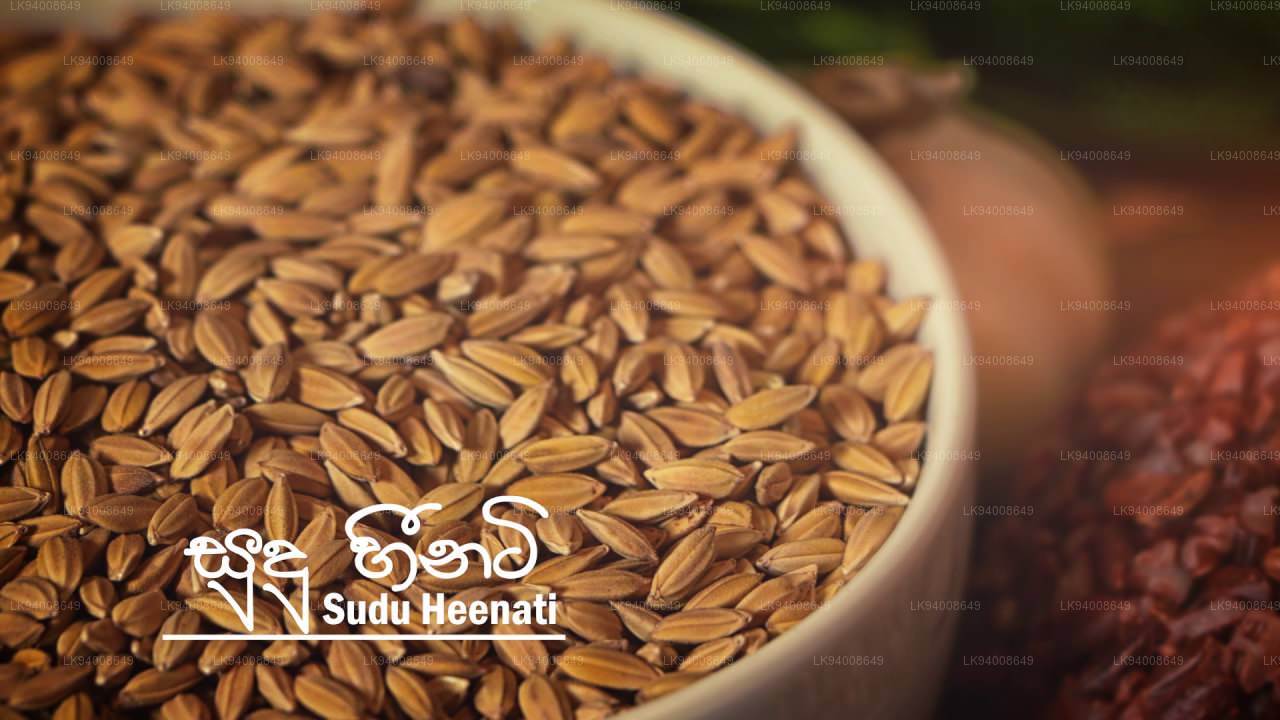 수두 헤네티
수두 헤네티작은 백미 품종인 수두 히네티는 영양가가 높고 항산화 성분이 풍부하여 스리랑카 전통 약용 식단에 이상적입니다. 부드러운 식감과 은은하고 고소한 풍미를 자랑합니다.
-
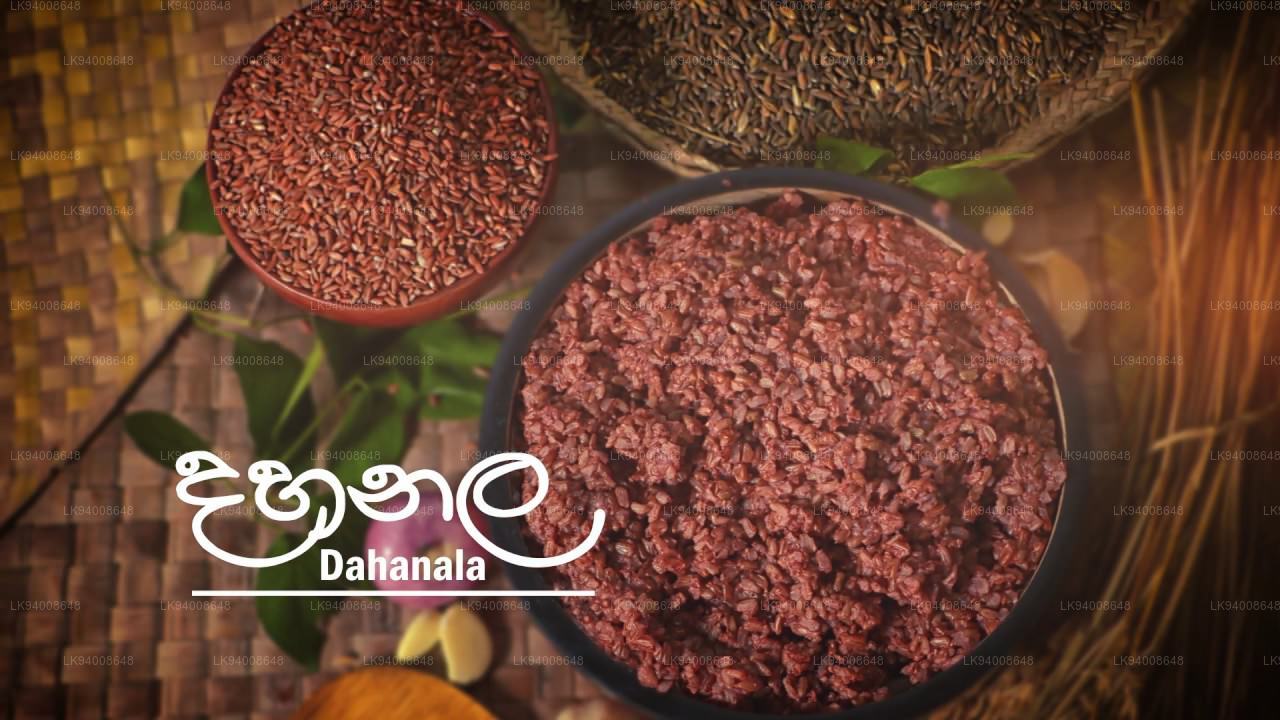 다하날라
다하날라다하날라는 희귀하고 영양이 풍부한 전통 쌀로 붉은빛을 띱니다. 높은 섬유질 함량과 순하고 달콤한 맛으로 인기가 많아 죽이나 건강식으로 안성맞춤입니다.
-
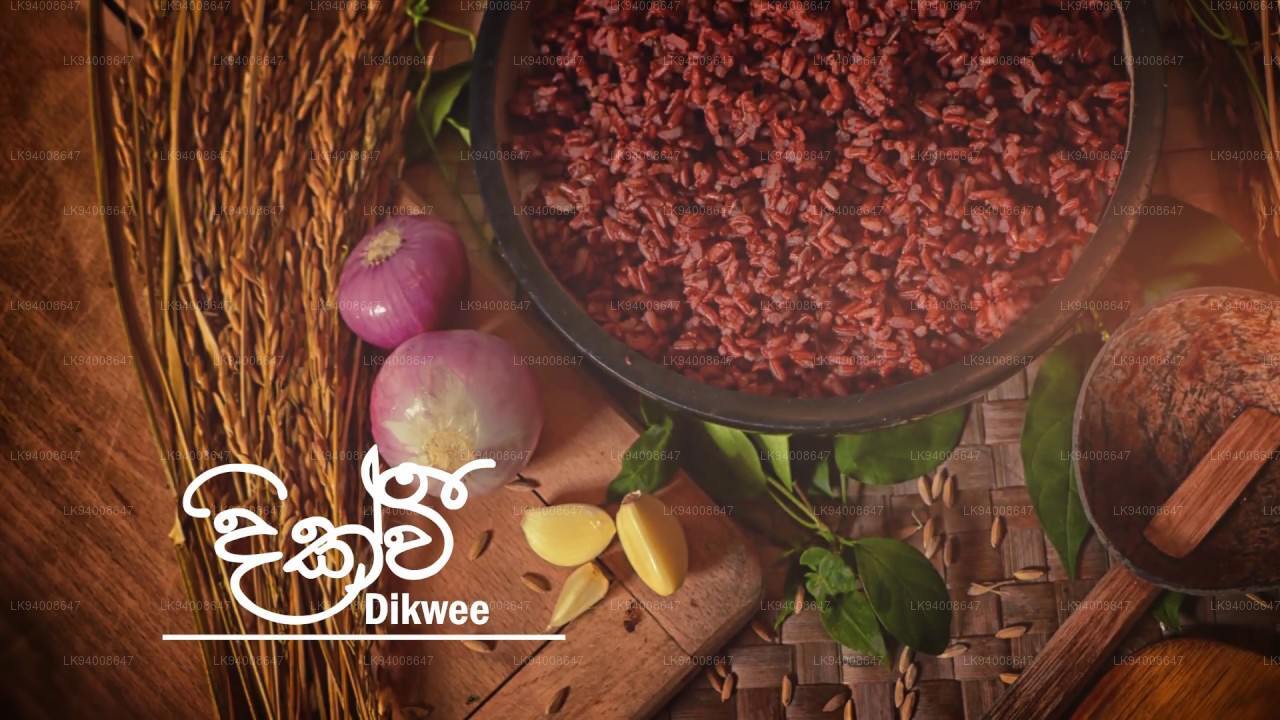 딕 위
딕 위딕 위(Dik Wee)는 스리랑카에서 전통적으로 재배되는 중립 적색 쌀 품종입니다. 최대 높이 150cm까지 자랍니다. 파종 후 4개월에서 4개월 반 이내에 수확할 수 있습니다.
-
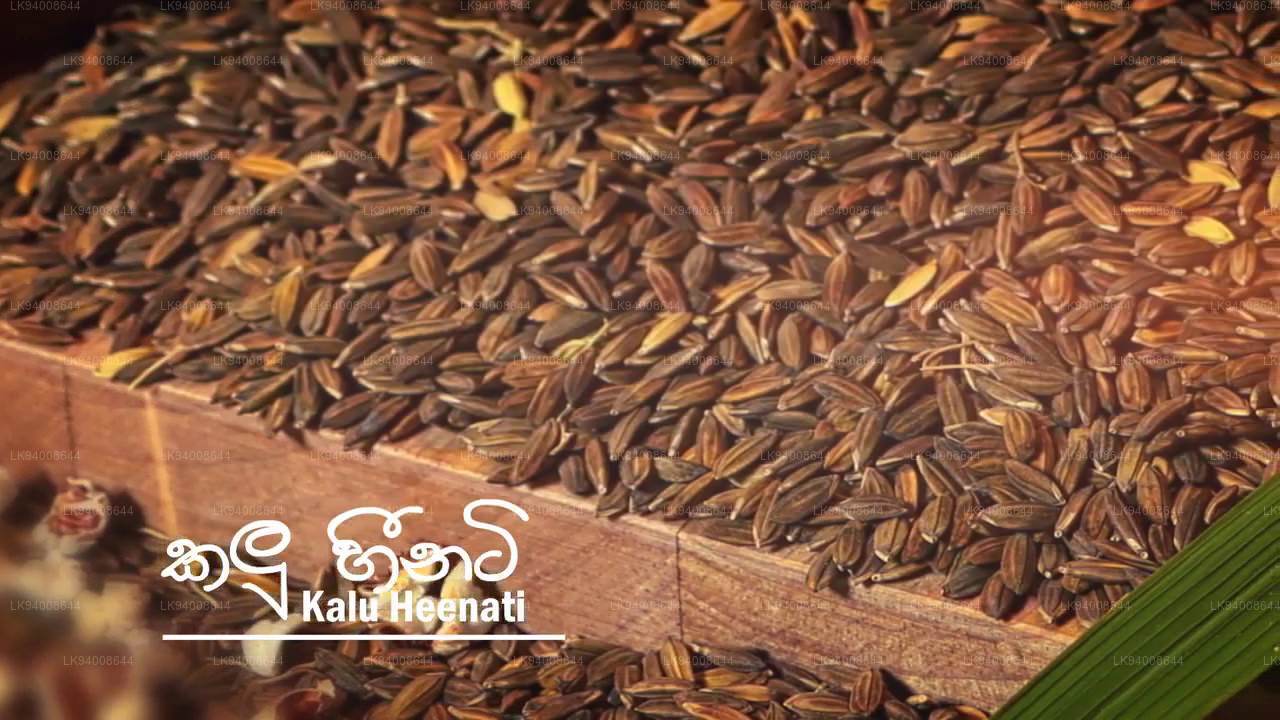 칼루 헤네티
칼루 헤네티이 품종의 벼는 성숙하면서 검은색으로 변하는 렘마(lemma)와 팔레아(palea)의 색깔 때문에 칼루 헤네티(Kalu Heeneti)라는 이름을 얻었습니다. 이 벼는 스리랑카에서 전통적으로 재배되며, 중간 크기의 붉은색 벼알을 생산합니다. 이 식물은 최대 120cm까지 자랍니다.
-
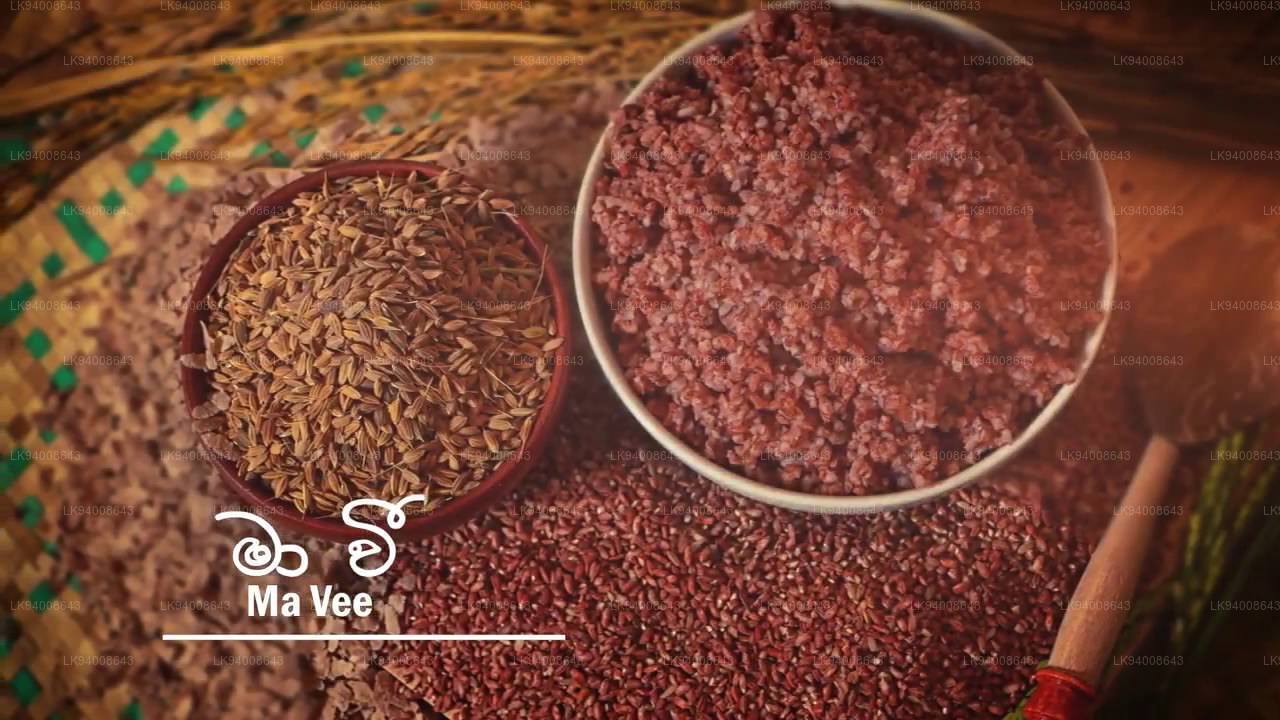 마 위
마 위마위(Ma Wee)는 스리랑카에서 전통적으로 재배되는 붉은 쌀 품종입니다. 벼의 크기와 모양은 짧고 둥근 품종부터 길고 중간 크기의 품종까지 다양합니다. 재배되는 벼 중 가장 키가 큰 품종 중 하나이며, 최대 높이는 350cm입니다.
-
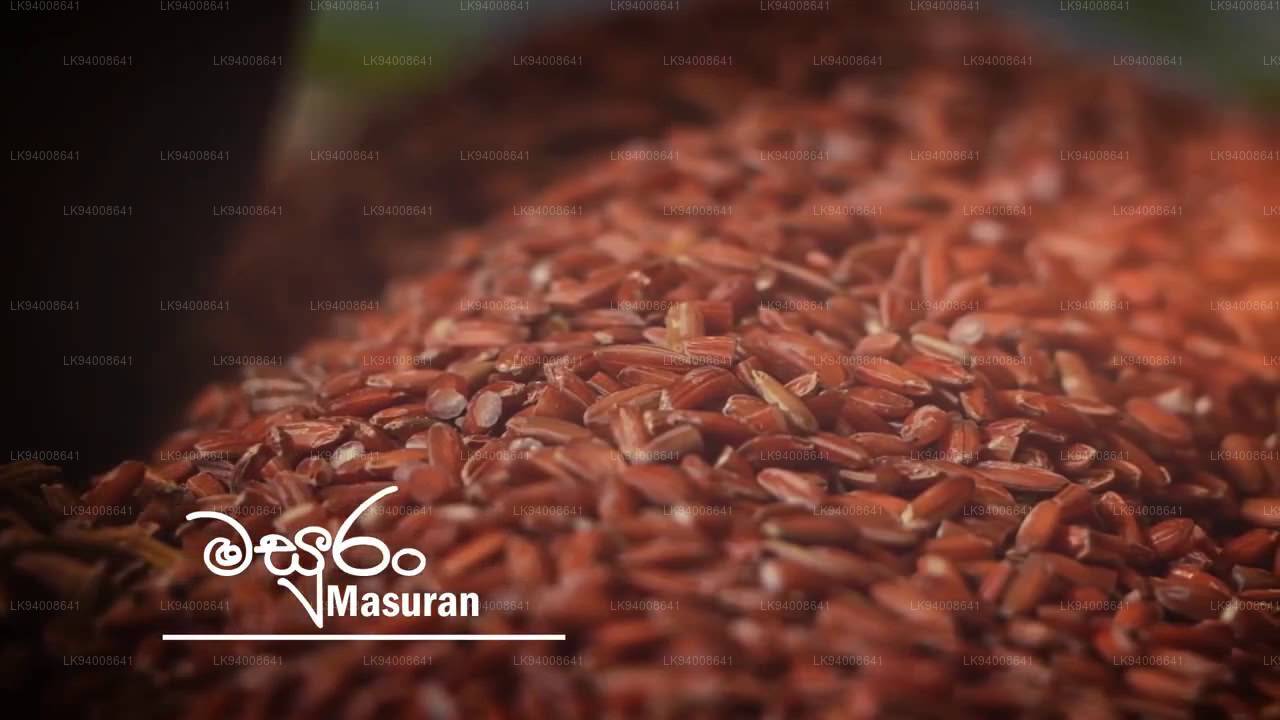 마수란
마수란마수란은 스리랑카에서 전통적으로 재배되는 인기 있는 중립 붉은쌀 품종입니다. 최대 높이 120cm까지 자라며 도복에 강합니다. 얄라(Yala) 계절에는 파종 후 3개월 반 이내에, 마하(Maha) 계절에는 4개월 반 이내에 수확할 수 있습니다.
-
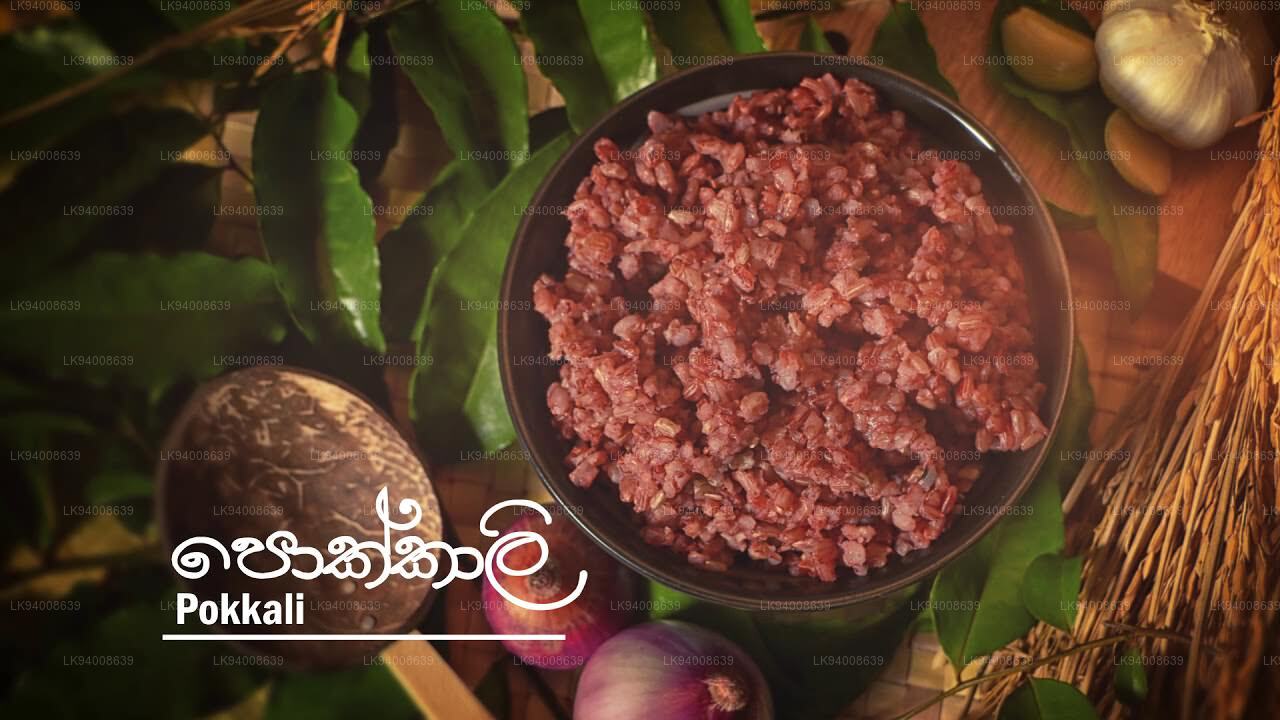 포칼리
포칼리포칼리는 스리랑카에서 전통적으로 재배되는 인기 있는 붉은쌀 품종입니다. 줄기는 약 130cm 높이이며, 한 그루에 약 10개의 분얼이 맺힙니다. 파종 후 3개월 반 이내에 수확할 수 있습니다.
-
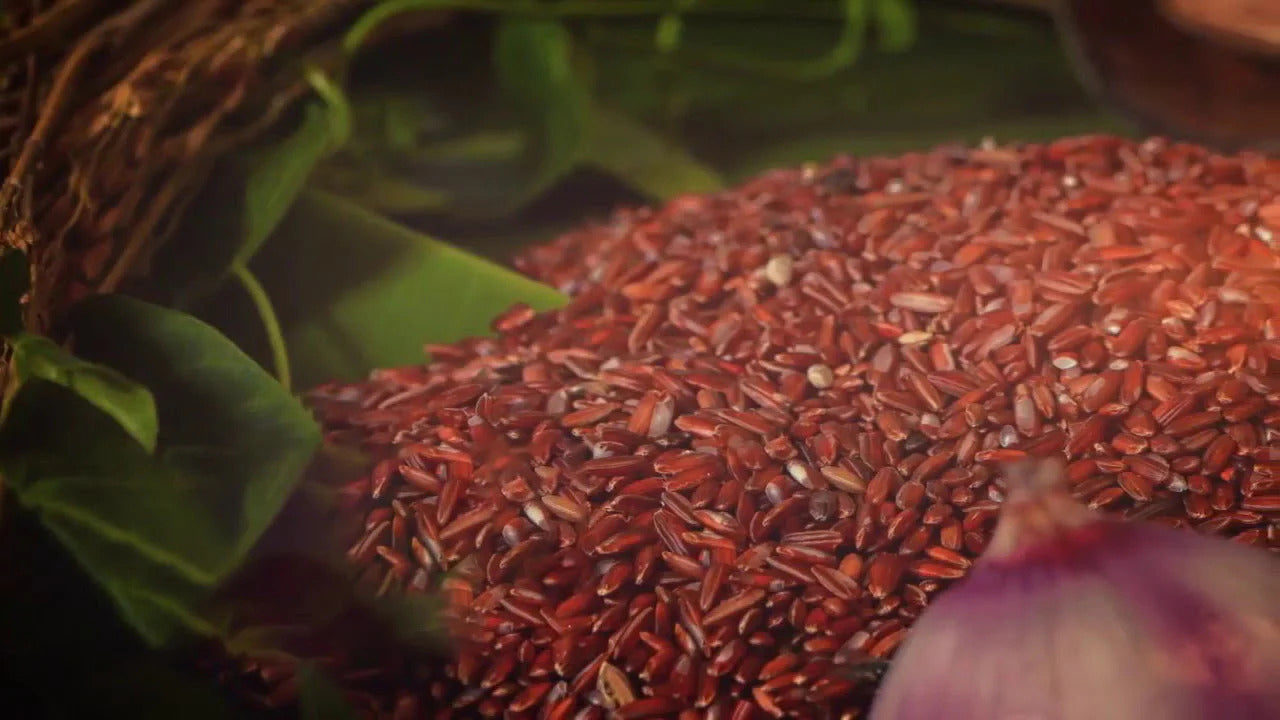 파차페루말
파차페루말파차페루말은 스리랑카에서 전통적으로 재배되는 매우 인기 있는 중립 적색 쌀 품종입니다. 최대 높이 120cm까지 자랍니다. 파종 후 3개월 반 이내에 수확할 수 있습니다. 성숙 단계에서는 줄기가 연한 푸른빛을 띱니다.
-
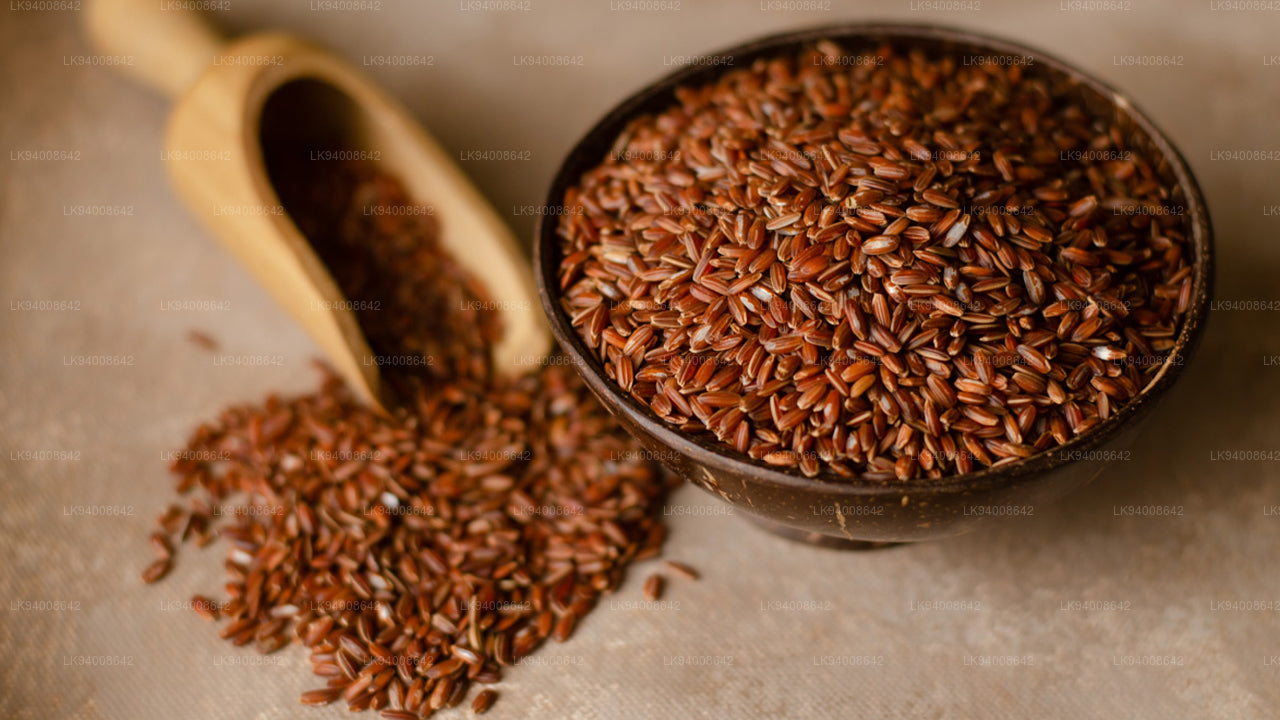 마다타왈루
마다타왈루마다타왈루는 스리랑카에서 전통적으로 재배되는 매우 인기 있는 단립종 적미입니다. 최대 130cm까지 자랍니다. 파종 후 4개월 이내에 수확할 수 있습니다.
-
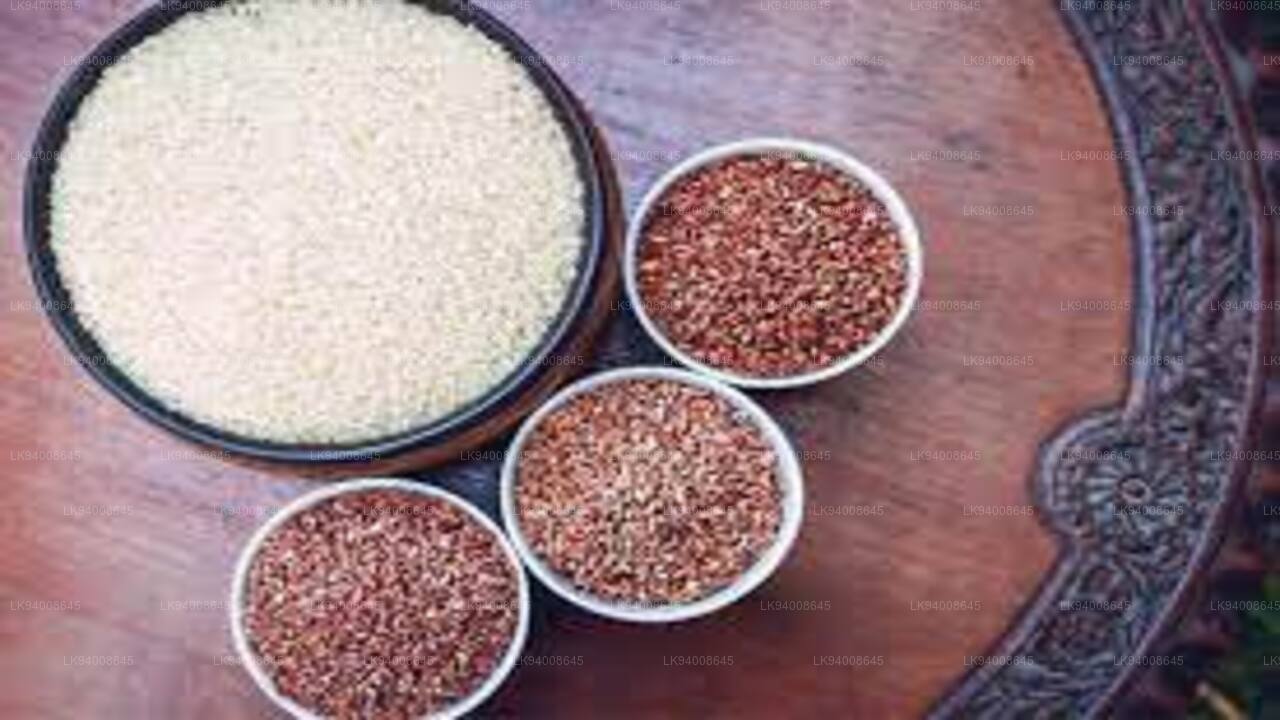 Gonabaru
Gonabaru고나바루는 스리랑카에서 전통적으로 재배되는 인기 있는 중립종 벼 품종입니다. 최대 높이 140cm까지 자랍니다. 파종 후 5개월 이내에 수확할 수 있습니다.
-
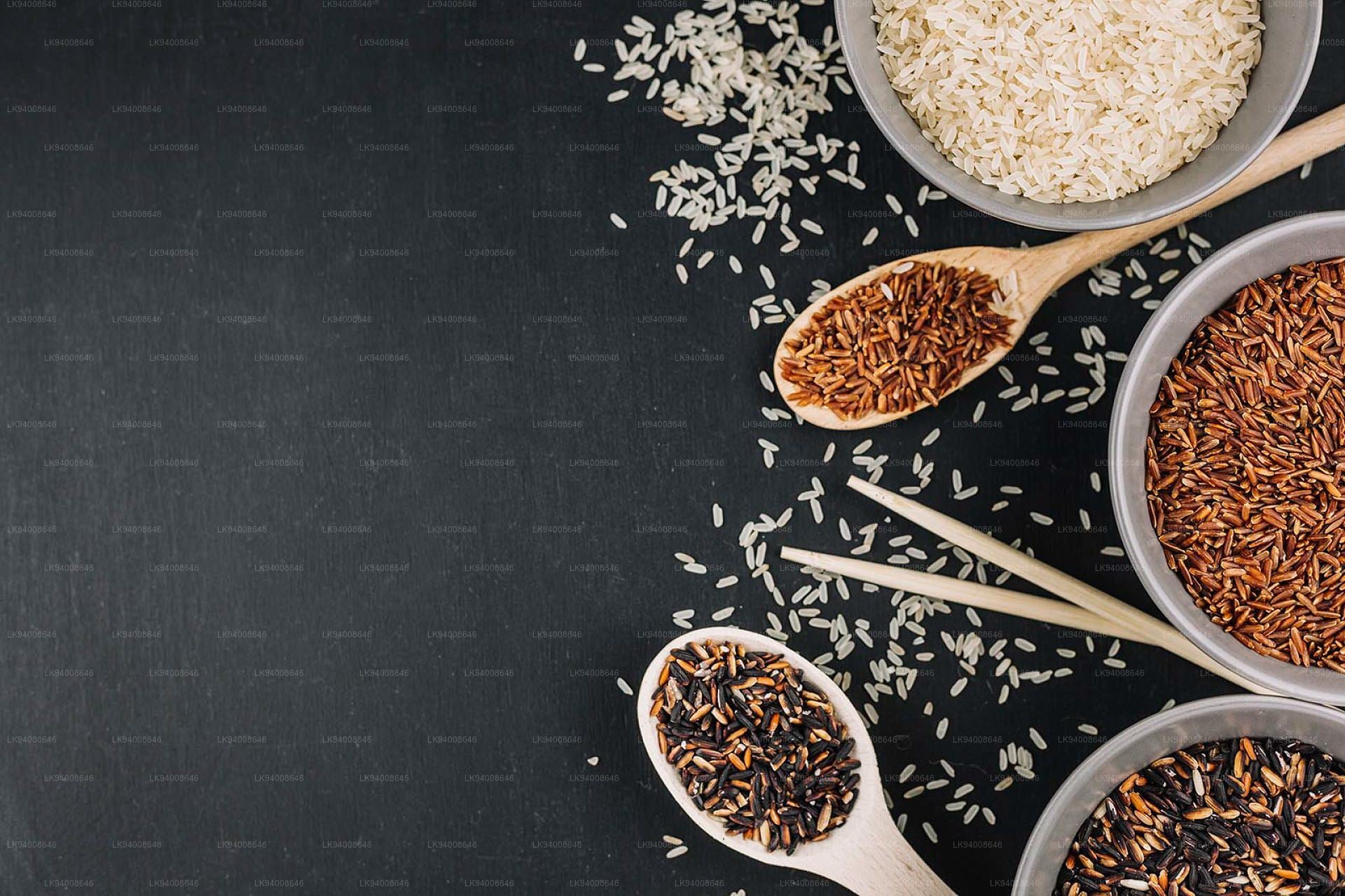 고다 헤네티
고다 헤네티고다히네티(Godaheeneti)는 스리랑카에서 전통적으로 재배되는 인기 있는 중립 붉은쌀 품종으로, 헤네티(heeneti) 품종에 속합니다. 이 식물은 최대 높이 160cm까지 자랍니다. 이 작물은 파종 후 3개월 반 이내에 수확할 수 있습니다.
-
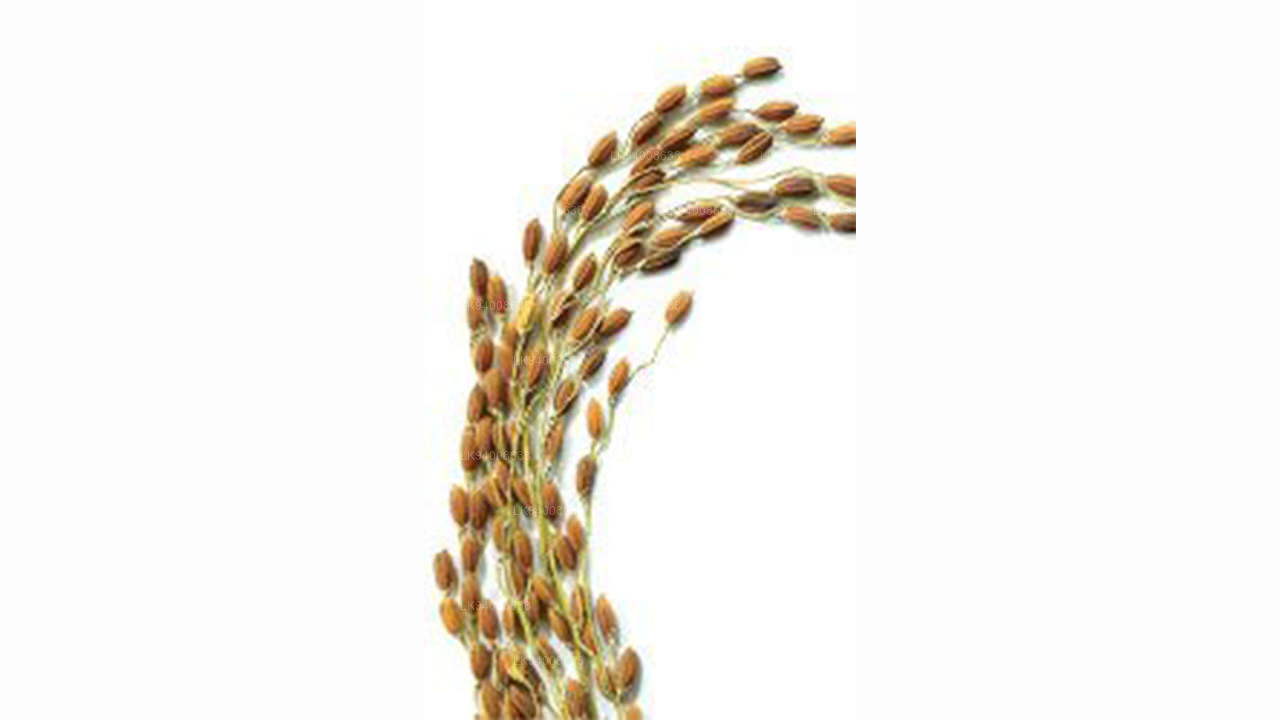 라스 수완달
라스 수완달라쓰완달은 스리랑카에서 전통적으로 재배되는 인기 있는 중립 붉은쌀 품종입니다. 최대 높이 120cm까지 자랍니다. 파종 후 3개월 반 이내에 수확할 수 있습니다.
















